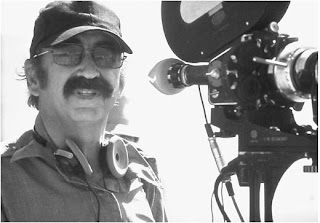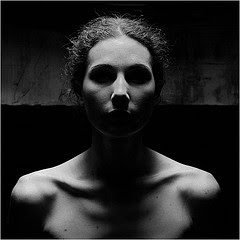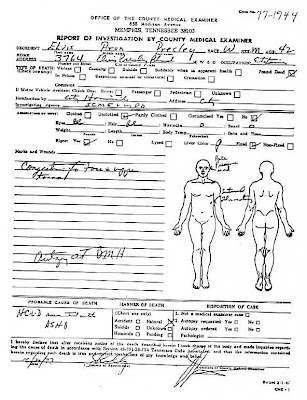1. In what ways does your media product use, develop or challenge forms and conventions of real media products?
2. How does your media product represent particular social groups?
3. What kind of media institution might distribute your media product and why?
4. Who would be the audience for your media product?
5. How did you attract/address your audience?
6. What have you learnt about technologies from the process of constructing the product?
7. Looking back to your preliminary task, what do you feel that you have learnt in the progression from it to the full product?
Thursday 25 February 2010
Tuesday 23 February 2010
Analysis of Crime Thrillers
The Bodyguard is a crime thriller. It begins with simple opening credits with the associates and main characters names on a black background/ screen. When the titles fade out of view, there is just a plain black, silent screen, which creates suspense as the viewer would not know what to expect. Then there is a sudden loud gun shot, before the first character is introduced. There is a close up of the gun being shot and the characters (shooters) face behind it, which allows the viewer to then see where the shots were coming from. The close up does not allow you to see a background which restricts the viewers from seeing the cause of the shooting or seeing who or what is being shot at. It then switches to another character who is being kept down by the shooter, which may put many questions into the viewers mind as they are unaware of why he is being held down or maybe hostage. When the camera begins to zoom out the film title appears in a large, bold font and the music begins. The camera then moves around the room which then becomes apparent to the viewer is a car park, it shows a person lying on the floor not moving who had obviously been shot at. At this point in the film the viewer can not be sure on whether the shooter character is a good or bad character. The music used in this particular scene of the clip is a sad/ mellow type of music which could be related to a type of crime film. The titles in this film do not tie into the film, the are just simply placed on top .
Friday 12 February 2010
Saul Bass

One of the best filmmakers and graphic designers was Saul Bass. Amongst his most famous title sequences are the animated paper cut-out of a heroin addict's arm for Preminger's The Man With The Golden Arm, the text racing up and down what eventually becomes a high-angle shot of the United Nations building in Alfred Hitchcock's North By Northwest, and the disjointed text that raced together and was pulled apart for Psycho (1960).
Film Noir research
Film noir is a sub genre of the thriller genre. It i characterised by a dark mood, cynicism and sexual motivations. An example of a Film noir is the 1946 Robert Siodmak film 'The Killers'.
This opening uses several thriller conventions. For example, it focuses around a central crime. Other conventional techniques used include violence. The murder of 'The Swede' is typical of the thriller genre as the violence itself is not shown in graphic detail. Tension is created by seeing The Swede in his bed cut with images of the murderes approaching his room. Another convention used is the heavily shadowed 'Chiascuro' lighting. This technique builds up the overall mystery of the film, and contributes to the tension. Here is an example below:

This opening uses several thriller conventions. For example, it focuses around a central crime. Other conventional techniques used include violence. The murder of 'The Swede' is typical of the thriller genre as the violence itself is not shown in graphic detail. Tension is created by seeing The Swede in his bed cut with images of the murderes approaching his room. Another convention used is the heavily shadowed 'Chiascuro' lighting. This technique builds up the overall mystery of the film, and contributes to the tension. Here is an example below:

Alfred Hitchcock Research

Sir Alfred Joseph Hitchcock, KBE (13 August 1899 – 29 April 1980) was an English filmaker and producer who pioneered many techniques in the suspense and psychological thriller genres. After a successful career in his native United Kingdom in both silent films and early talkies, Hitchcock moved to Hollywood. In 1956 he became an American citizen while retaining his Britsh citizenship.
Hitchcock directed more than fifty feature films in a career spanning six decades. Often regarded as the greatest British filmmaker, he came first in a 2007 poll of film critics in the Daily Telegraph newspaper, which said: "Unquestionably the greatest filmmaker to emerge from these islands, Hitchcock did more than any director to shape modern cinema, which would be utterly different without him. His flair was for narrative, cruelly withholding crucial information (from his characters and from us) and engaging the emotions of the audience like no one else.
Conventions that this clip conforms to include:
A flawed hero: The photographer with the broken leg
Location: Busy with the hustle and bustle of peoples flats
Voyeurism: The photographer sees into peoples private lives, possibly seeing things he shouldn't
Objectification of women: All the women in the clip seem to be running around doing things for the injured man.
Thursday 11 February 2010
The task for this project was to produce a video in which a character was tied up, creating a sense of claustrophobia through the use of the camerawork, chosen location, editing and sound.
Our film had to include these shot types:
- Close-up
- Extreme Close-up
- Mid Shot
- Long Shot
- Pan
- Slow Zoom In
- Point Of View
- High Angle
- Low Angle
Overall I think we completed this task well as our footage and soundtrack all fit together, and create the atmosphere, sense of panic and fear of the unknown that was required.
Thriller Practice
Our task was to create a 1 minute sequence of someone being tied up, whilst creating a sense of claustrophobia and panic, through camerawork, editing and music. We used the following camera shots:
- Extreme close up
- Close up
- Mid shot
- long shot
- Pan
- Zoom in/out
- Point of View
- High Angle
- Low Angle
Camera Work Practice
The objective of the camera work practice was to put everyone in different groups and assign them roles which they would usually not take.
I was assigned the role of the camera man. This involved making sure all of the shots in the shot list were included in the scene and making it easily recognizable for the audience. As I had missed some of the practical lessons earlier on in the year, it was vital that I had a chance to take on some practical work with the camera and this improved my camera work skills.
I feel that given the time we had to film, edit, and make a soundtrack (one and a half lessons) we worked effectively and efficiently as a team, all undertaking each role and helping each other out with knowledge of our individual areas.
I worked closely with the shot list, ticking each one off as I filmed it. I think I included all of the shots in the shot list and made each of them clear to see.
Friday 5 February 2010
Prop Responsibilities
Tom:
Fake gun, 'forensics suit', fake blood, waterproof trousers
Gabriel:
Stills camera, police tape, surgeons gloves
Victor:
Wellington boots,
Fake gun, 'forensics suit', fake blood, waterproof trousers
Gabriel:
Stills camera, police tape, surgeons gloves
Victor:
Wellington boots,
Labels:
Gabriel Clarke,
Sade Mills- Isiorho,
Tom Snell,
Victor Mishra
Thursday 4 February 2010
Test for animation of Title Sequence
We wanted to replicate the jittery effect used in the title sequence of 'Se7en'. By using Final Cut, we managed to animate the text so it moved tiny amounts at a time. This was extremely time consuming, so if it is used in our opening we will make less individual movements and simply loop the piece.
Labels:
Gabriel Clarke,
Sade Mills- Isiorho,
Tom Snell,
Victor Mishra
Practice titles
As you want to keep the audience interested in the film, the opening sequence and titles are vital in keeping the audience's attention because it is the first few minutes of a film that can potentially reel them in for the whole movie.
There are four members in our group, so we are likely to include the four main titles in our credits. Here is an example of some of the titles we intend to use:
However, we are using it in the point of view sequence where Victor is falling in and out of consciousness. This allows us to fade in titles when drifting out of consciousness a few times, starting with titles such as Editor/Sound etc and then director. After the climax, (Being shot) the title of the movie will appear.
Consequently, we hope that, by adding in the titles during the tense moments it will give a professional look to it rather than just sticking them in at the end.
There are four members in our group, so we are likely to include the four main titles in our credits. Here is an example of some of the titles we intend to use:
- Director - Tom Snell
- Cinematographer - Gabriel Clarke
- Sound - Sade Mills-Isiorho
- Editor - Victor Mishra
However, we are using it in the point of view sequence where Victor is falling in and out of consciousness. This allows us to fade in titles when drifting out of consciousness a few times, starting with titles such as Editor/Sound etc and then director. After the climax, (Being shot) the title of the movie will appear.
Consequently, we hope that, by adding in the titles during the tense moments it will give a professional look to it rather than just sticking them in at the end.
Labels:
Gabriel Clarke,
Sade Mills- Isiorho,
Tom Snell,
Victor Mishra
How are titles used? - Sade Mills-Isiorho
I think that the titles in the opening sequence to 'Catch me if you can' relates to the narrative of the film as it shows a person trying to escape/ run away from other people. The opening sequence to this film is animated and the titles in this sequence are very simple and subtle as they are shown as part of the scene, i.e. the letters from the words acting as a bridge for the cars to go under. The titles in this sequence also move with the the animation, for example the words move up as the characters move up and form a ladder for the character to climb up. I feel this is an effective way of connecting the titles to the opening sequence/ narrative as titles tend to be a necessity in the film world and not very interesting for the audience. By animating and adding motion to the titles it makes it more visual for the viewer which makes it's more interesting to watch.
Shot List
1 Point of View
Props: Sack
Being dragged, sack over camera simulating bag over head. Conversation can be heard, but is heavily distorted. Some light visible through sack.
2 Point of View
Props: Sack
The bag is removed, revealing isolated location. Fade out, showing character slipping out of consciousness.
3 Point of View
Props: N/A
Fade from black back to image, having moved to a new location. Still being dragged. Fade out again
4 Point of view/Canted Angle
Props: Gun
Fade back in. The camera is looking at the floor. Pans up at a canted angle, revealing a person sanding in front of the camera, pointing a gun. Pan up just short of revealing their face.
6 Close up
Props: Gun
Close up on gun, emphasizing barrel.
7 High angle/ Long shot
Props:Gun
Looking down on scene of imminent murder. This is the only time we see the character the POV shots were representing. As the shot is fired, the 'camera character' slumps forward. Fade to black, with the title fading in over the black.
9 Establishing shot
Props: Police Tape, Camera
Police tape strung between two trees in foreground. In background, forensic scientist taking photos of crime scene.
From here, all shots are only few frames in duration
10 Med. Shot
Props: Camera
Forensic taking photo of corpse.
11 Close up
Props: Photos of body
Close up of photos scattered on desk
12 Extreme close up
Props: Autopsy forms, Pens
Close up of forms being filled in. Focus on words linked to murder/injury, such as 'Homicide' or 'Damage'
Props: Sack
Being dragged, sack over camera simulating bag over head. Conversation can be heard, but is heavily distorted. Some light visible through sack.
2 Point of View
Props: Sack
The bag is removed, revealing isolated location. Fade out, showing character slipping out of consciousness.
3 Point of View
Props: N/A
Fade from black back to image, having moved to a new location. Still being dragged. Fade out again
4 Point of view/Canted Angle
Props: Gun
Fade back in. The camera is looking at the floor. Pans up at a canted angle, revealing a person sanding in front of the camera, pointing a gun. Pan up just short of revealing their face.
6 Close up
Props: Gun
Close up on gun, emphasizing barrel.
7 High angle/ Long shot
Props:Gun
Looking down on scene of imminent murder. This is the only time we see the character the POV shots were representing. As the shot is fired, the 'camera character' slumps forward. Fade to black, with the title fading in over the black.
9 Establishing shot
Props: Police Tape, Camera
Police tape strung between two trees in foreground. In background, forensic scientist taking photos of crime scene.
From here, all shots are only few frames in duration
10 Med. Shot
Props: Camera
Forensic taking photo of corpse.
11 Close up
Props: Photos of body
Close up of photos scattered on desk
12 Extreme close up
Props: Autopsy forms, Pens
Close up of forms being filled in. Focus on words linked to murder/injury, such as 'Homicide' or 'Damage'
Labels:
Gabriel Clarke,
Sade Mills- Isiorho,
Tom Snell,
Victor Mishra
How are titles used? - Victor Mishra
In this opening scene of Pulp Fiction, the titles are used separately from the action. However, the credits begin when the action reaches towards the climax, and the titles of the movie is shown.
Some of the first credits include the production companies, and then the director, with actors coming afterwards. The black on yellow contrast really makes the credits stand out as they are contrasting and in your face.
Wednesday 3 February 2010
Detailed Props List
Hessien Sack- This will be placed over the camera during the POV shots to create the illusion that the character has their head covered. Once removed, it will be visible on the ground throughout the rest of the sequence.
Gun- A replica BB gun will be used. It will feature in a variety of different shots, including the POV shots, a close up and a long shot.
Stills Camera- During the 'fast cut' sequence, the image of a forensic scientist taking photos of the crime scene we feature
Photos- Photos, presumably taken by the scientist, will show areas of the crime scene.
Warning Tape- Similar to the camera, this will feature in the 'fast cut' sequence.
Autopsy/Police Forms- Again, during the 'fast cut' sequence we will see various police forms being filled out, with close ups on key words.

Gun- A replica BB gun will be used. It will feature in a variety of different shots, including the POV shots, a close up and a long shot.
Stills Camera- During the 'fast cut' sequence, the image of a forensic scientist taking photos of the crime scene we feature
Photos- Photos, presumably taken by the scientist, will show areas of the crime scene.
Warning Tape- Similar to the camera, this will feature in the 'fast cut' sequence.
Autopsy/Police Forms- Again, during the 'fast cut' sequence we will see various police forms being filled out, with close ups on key words.
Labels:
Gabriel Clarke,
Sade Mills- Isiorho,
Tom Snell,
Victor Mishra
Monday 1 February 2010
How are titles used? -Gabriel Clarke
I feel that the opening credits for Sin City are very effective because they are not too complicated and they portray the origin of the film (the Graphic Novel), this also layered with a suitable tension building soundtrack wants us to watch on and find out what the characters shown in the background do and contribute to the story-line. The red text against the otherwise monochrome images add to a sense of danger and uneasiness.
We hope to replicated this simple yet effective opening credits by having our moving picture fading in and out in the background, much like Sin City.
Subscribe to:
Posts (Atom)


